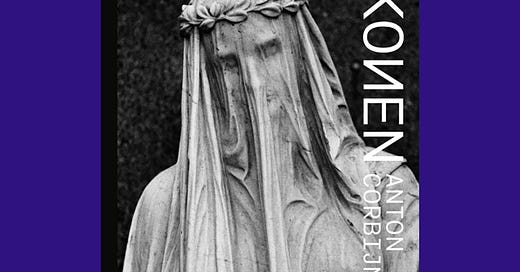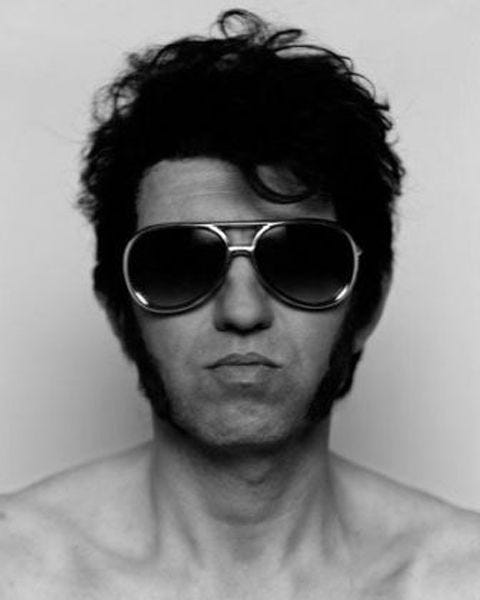Book Review: Ikonen by Anton Corbijn
Master photographer and director/filmmaker Anton Corbijn presents in his latest publication a series of striking images focusing on icons and how they are commemorated
Ikonen by Anton Corbijn
175 Pages
Publisher: Hannibal Books
2022
When we die, some people will remember us by the imprint we have left in their lives, hearts, and minds. People shape their perceptions of others through interactions with them and often they are affected by things we have never been aware of. Legacy is a curious phrase and everyone wants to leave one, to do something that resonates permanently through history. We have witnessed enormously attended burials of celebrities, political leaders, and nobles whose memories and deeds lingered and then were forgotten. Why are some people almost instantly forgotten when they have gone, while others remain, embedding themselves so deeply into our culture that they are still studied, and psychoanalyzed, people are writing about their lives, deaths, and achievements, even depicting them in films, eons after they are gone? Where do our voices go when we are no more? Esteemed photographer and film director Anton Corbijn’s book Ikonen (or Icons) weaves together three visual stories that are united by the attempt to portray icons of different eras and how people wished to be remembered after they died or how the remembrance of these people’s deeds was kept alive long after they were gone. Consisting of three visual chapters, Corbijn portrays three stories that touch on the ideas of remembrance on personal and collective levels, mortality, and fame.
The first chapter is titled “Cemeteries” and consists of photographs of tombs, monuments, and memorials at famous cemeteries in Milan, Genoa, Venice, and Vienna. The photographs were taken at the start of the ‘80s when he had the idea of photographing the cemetery monuments in these locations while accompanying a friend who was writing poetry. The photographs in this collection were part of the abandoned project titled “Cemeteries 1980-1983” and were previously exhibited before.
“Cemeteries” consists of a series of black-and-white photographs from burial grounds that explore the beauty of cemeteries, monuments, tombs, and memorials. In this chapter, the renowned photographer has turned his camera away from people and chosen to study monuments, tombs, memorials, and cemeteries that are resonant with historical and emotional associations. One of the most important and interesting features in a cemetery or graveyard is the monuments. Cemeteries aren’t just sacred places for mourners. These can be locations of wonder for art lovers, master gardeners, historians, hikers, and anyone interested. In a way, these sculptures, memorials, and plaques are impulses for externalizing the memory of departed ones and the caring into some kind of physical objects. His photographs capture the uniqueness of these works of art that appear solemn, solitary, and eternal, and show the passage of time and exposure to the elements. Corbijn’s distinct camera angles, focal points, contrasts, and grit in black and white are fully present. In a way, he depicts monuments and sculptures as real people which can also be said of his actual celebrity photographs where he depicts celebrities as sculptures against vivid and contrasting backgrounds.
Religious imagery has always been present in Corbijn’s work, regardless if it is photography or video. Having been born in a family of priests, Corbijn has always been drawn to religious imagery in his work. His father was a priest for the Dutch Reformed Church including many other his relatives and as a child even he had ideas of becoming a missionary. So, religion and its symbolism are deeply embedded in him. This can best be seen in Klaartje’s Quijirns documentary Inside Out or in his photographs and videos he has done for other artists that are replete with religious imagery along with the pop icons against this backdrop. Think of Nirvana’s “Heart-Shape Box” video or Depeche Mode's iconography in their visual language. But this is just a segment in his rich visual vocabulary and not a predominant feature.
The rites of burial were always considered to be sacred as they bind this world to the otherworldly. At the center of these monuments is the Appiani family tomb which was sculpted in 1910, and is located in the Monumental Cemetary of Staglieno in Genoa Italy. It was made famous when a photograph of the tomb taken by Bernard Pierre Wolff was used on the cover of the album Closer by Joy Division. Corbijn was closely associated with the band’s lead singer Ian Curtis who died by his own hand two years before these photographs were taken and his photographs of the band are considered iconic. These can be seen in their full glory in a video he shot for the song “Atmosphere” in 1988, but also his debut feature film titled Control portrayed the story of this troubled singer. After committing suicide on the 18th of May 1980, the album Closer was published two months to the day on the 18th of July with the band completely unaware of having a photograph of a tomb and sculptures of people mourning. Actually, the tomb depicts an image of Jesus and Mary. Who knows, maybe this visit was a sort of pilgrimage. The cemeteries were also used as backdrops for other photographs related to music that weren't part of these series, most notably with David Sylvian in Paris, and the band Ultravox, when the band recorded the video for their hit single “Vienna.”
The second chapter is titled “Lenin, USSR” and features photographs taken on the streets of Leningrad (or St. Petersburg as it is called now) with photographs of Lenin, the first leader and founder of the former Soviet Union. These photographs were taken during the height of the Cold War in the ‘80s. They consist of pictures of parades, streets, and walls with murals, and everywhere there is an enormous picture, a monument, or a mural of Lenin looking over the streets. During the communist era, it was a common feature to put photographs or murals of iconic political figures mostly as reminders for the new generations not to stray from the path set by their predecessors. There are two photographs of Lenin among many - the one surrounded by children or pioneers which sends this message. Also, there is a photograph of a mural of Lenin surrounded by workers as another reminder of what he stood for and that he will always be everyone’s comrade and equal. These photographs are like time capsules. They have the gift of taking us back in time and to locations that no longer exist. Not only the country doesn't exist anymore, but the city’s name is changed from Leningrad to St. Petersburg. Some of the photographs from this trip were later used as a cover for Frankie Goes to Hollywood’s hit single “Two Tribes” or for the album cover for Art of Noise’s Who’s Afraid of (The Art of Noise!) dating from 1984.
The third chapter titled “a.somebody” is the most joyful one. After dealing with heavy and serious subjects, this chapter offers some joyful respite. Corbijn has perfected the self-portrait art or the selfie and offers self-portraits in the guises of dead rock stars such as John Lennon, Frank Zappa, Janis Joplin, Freddie Mercury, Joe Ramone, Sid Viscous, and Elvis (those that I was able to recognize) and in the second part of this chapter, he has taken photographs of himself as he recreated these deceased artists in the streets of his birthplace, Strijen. Lucid and personal, all of these works inform the artist's ongoing effort to play on the symbolism of dead rock stars i.e. the rock music immortals who live on after death.
The series of photographs explores the use of images in the creation of icons in different eras and times, for various purposes. This beautiful, large-format book combines photographs from various periods of Anton Corbijn’s career and aims at telling different stories that are united under a single thread – the art of memory. Ikonen is an evocative and deeply personal statement by a photographer whose career now spans more than 40 years, encompassing a broad range of subject matters and influences.
Photo Credit: Anton Corbijn








